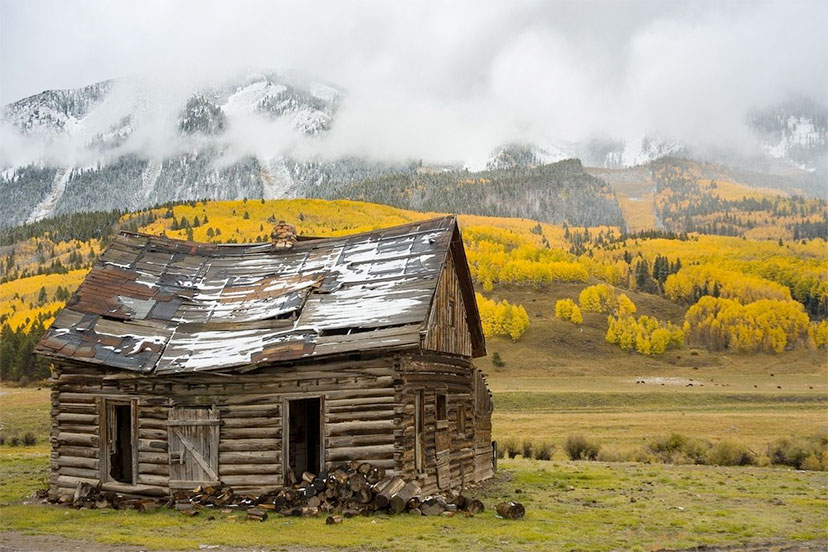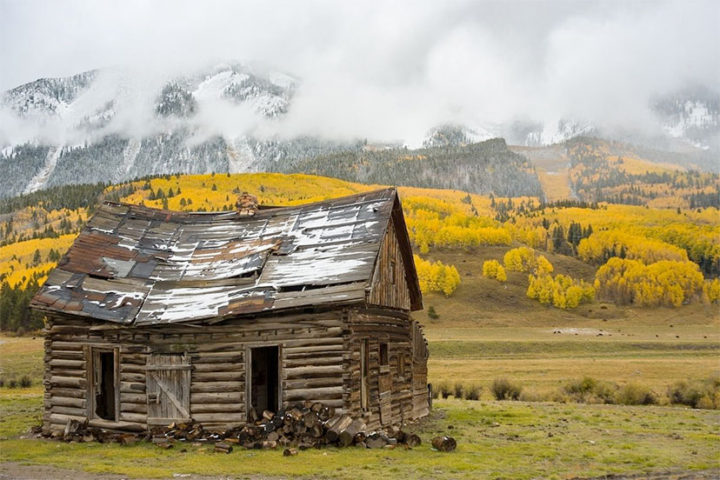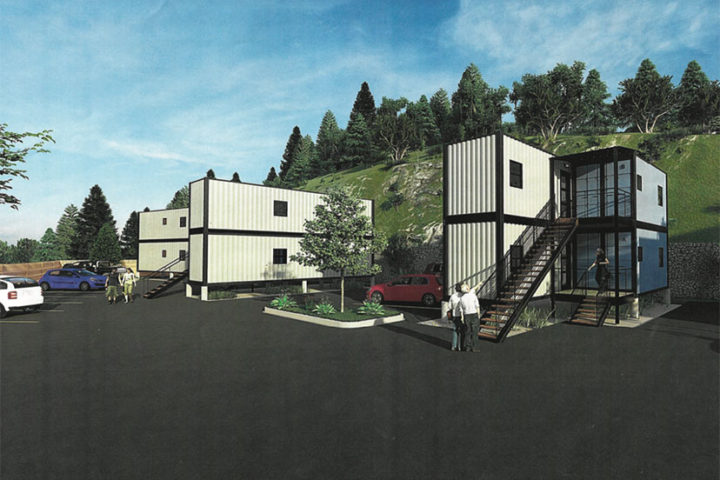We can look back on Colorado’s log cabin tradition and witness the style’s historical transition from “low status” affordable housing, for families on the lowest rungs of the socio-economic ladder…
… to “high status” housing, purchased by some of the wealthiest families in Colorado.
I doubt anyone can fully explain how, and why, such a transition took place.
Why did log cabins cease to be affordable in, for example, Archuleta County? In a community blessed with thousands of acres of the appropriate raw materials, including thousands of acres of standing dead Engelmann spruce, killed by a tiny bark beetle sporting the scientific name Dendroctonus rufipennis?

According to a 2019 article by Ryan Lockwood, published here in the Daily Post:
Spruce beetle populations caused widespread tree mortality for the seventh consecutive year. Although the acreage affected by this pest annually has declined for the past four years, 178,000 acres of high-elevation Engelmann spruce were affected statewide in 2018. Approximately one-third of these affected acres were “new,” or previously unaffected areas. Primary areas impacted include forestlands in and around Rocky Mountain National Park, and portions of the San Juan Mountains, West Elk Mountains and Sawatch Range.
Spruce beetle populations caused widespread tree mortality for the seventh consecutive year. Although the acreage affected by this pest annually has declined for the past four years, 178,000 acres of high-elevation Engelmann spruce were affected statewide in 2018. Approximately one-third of these affected acres were “new,” or previously unaffected areas. Primary areas impacted include forestlands in and around Rocky Mountain National Park, and portions of the San Juan Mountains, West Elk Mountains and Sawatch Range.
Since the year 2000, spruce beetle outbreaks have caused tree mortality on more than 1.8 million acres in Colorado, and approximately 40 percent of the spruce-fir forests in Colorado have now been affected. Blowdown events in Engelmann spruce stands, combined with long-term drought stress, warmer temperatures and extensive amounts of older, densely growing trees, have contributed to this ongoing epidemic.
Spruce beetles continue to infest high-elevation Engelmann spruce throughout much of Colorado. Spruce beetle populations in 2020 increased in Hinsdale, San Juan and La Plata counties; newly infested forests in eastern Gunnison and western Chaffee counties are experiencing severe, intense infestations. In Grand County, the intensity of infestations has declined from past years, as the beetle depletes large-diameter Engelmann spruce from the forest.

The spruce beetle generally chooses large-diameter trees — trees with thicker, more protective bark — in which to lay its eggs. Beetle larvae live in the thin, phloem (growing) layer between the bark and the wood. The interior wood remains undamaged by the beetles and usable for construction for some time after the tree dies.
Can we wrap our heads around this idea? 1.8 million acres of large-diameter Engelmann spruce, standing in our Colorado forests, slowly decaying?
The story is just too complicated, it would seem. It’s so much easier to continue importing kiln-dried lumber from Canada, and letting our lowest-paid workers live in nylon tents, or in camper vans, in the national forest. The same national forest filled with millions of dead trees.
We’re also importing another resource, and we’re not quite sure how to wrap our heads around that situation, either. Shipping containers, sent over from China and the rest of Asia, filled with consumer goods to stock Walmart and Amazon warehouses… and no reason to send the containers back, because we have nothing to fill them with. It’s cheaper to simply abandon the metal boxes… or treat them as ‘scrap metal’ to be melted down.
Then we have a person like businessman George Brown, who believes shipping containers can be combined in various combinations and converted into affordable duplexes suitable for individuals and small families.
From the April 27, 2021 Town Planning Commission meeting minutes:
Mr. Brown noted that this development is intended for workforce housing and will rent each until for between $825-$850 a month per unit. He will be adding a privacy fence between the homes and the neighboring businesses. Member [Jeff Posey] asked the applicant if he wanted to add more units on this property. Mr. Brown added that he is not planning on any other units at the moment; that these units have a lifespan of 15-20 years; and mentioned that he plans on getting a geotechnical report prior to Final MDR. Chair [Peter Hurley] asked what Mr. Brown plans on doing with these buildings after the 15-20 years. Mr. Brown answered that he does not have a plan at the moment…
…Director [James Dickhoff] noted that if Mr. Brown were to combine his two lots, there may be a cost savings on the parking lot. Member [Peter Adams] asked the applicant why he wants to retain the two lots. Mr. Brown answered that combining lots might impact financing, but he is considering combining the lots. Member Adams asked the staff if a project like this needed a bond, and Director Dickhoff answered no. Chair Hurley opened for public comment. Sherry Phillips thanked Mr. Brown and mentioned that she was in Durango and saw a similar project and thought that Pagosa needed this…
…Member Adams asked Mr. Brown if this property was in an association. Mr. Brown answered no. Member Adams asked the applicant what the storage plan for this development would be. Mr. Brown answered that he is considering bringing in another storage container or canopy for renter storage. Director Dickhoff noted that an outdoor storage plan is needed and that he believes that this property is in Piedra Estates and the applicant would need to receive confirmation from the association prior to construction…
…Commissioner Posey moved to approve the Sketch Major Design Review application for the proposed 103 Majestic Drive Apartments finding the application to be in general compliance with the intent of the Land Use Development Code provisions…
As we noted yesterday in Part One, the Town Planning Department incorrectly advertised Mr. Brown’s April 27 public hearing before the Planning Commission, and the proposal will need to be heard once more, rescheduled for the May 25 Planning Commission meeting at 5:30pm at Town Hall.
Once upon a time — a long time ago — a person wishing to build a duplex in Pagosa Springs needed to own a parcel of property, and possess enough money to pay for labor and materials. Life has become much more challenging. There’s plenty of red tape wrapped around any housing project in Archuleta County… plenty of preconceived notions about what makes for a livable community, and plenty of ‘planning’ rules and regulations to enforce those preconceived notions…




